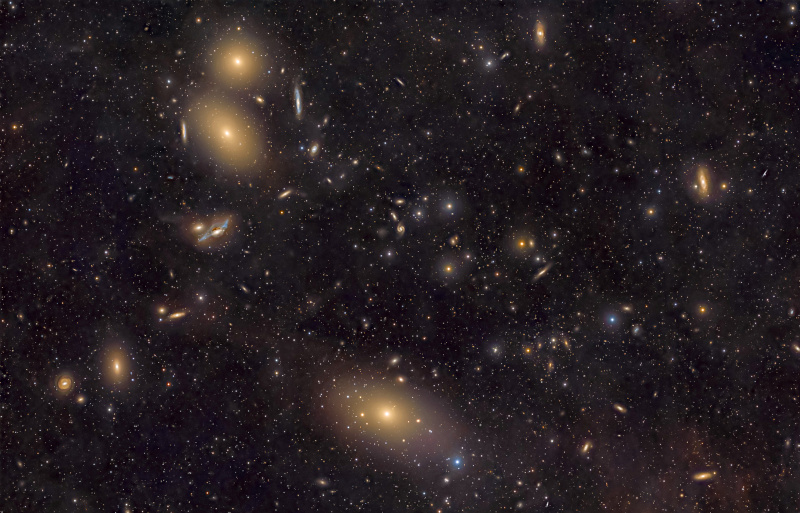
Image: The Virgo Cluster galaxies span approximately three Full Moons. The Virgo galaxy cluster is located approximately 50 million light years away, and is the closest galaxy cluster to our own local galaxy group. We can see the bright elliptical Virgo galaxies M87 (bottom center), M84 and M86 (top left). Photo credit: JWST apod domain NASA.
The Virgo Galaxy Cluster is a massive cluster of galaxies located in the constellation Virgo. It is the closest galaxy cluster to the Milky Way, at a distance of about 54 million light years. This cluster is particularly important to astronomers because it provides detailed insight into the large-scale structure of the Universe.
The Virgo cluster has an irregular shape, with three main subclusters centered on the galaxies M87, M86 and M49. The largest of these subclusters is the one centered on M87, a giant elliptical galaxy. The mass of the Virgo cluster is estimated at around 1014 solar masses. The Virgo Galaxy Cluster is composed of approximately 2,000 galaxies, most of which are elliptical, spiral, and irregular dwarf galaxies.
One of the notable features of the Virgo Galaxy Cluster is the presence of a large number of dwarf galaxies.
Remarkable characteristics of the Virgo cluster:
- It is the closest galaxy cluster to the Milky Way.
- It contains around 2,000 galaxies, 90% of which are dwarf galaxies.
- It has an irregular shape, with three main sub-clusters.
- The mass of the cluster is estimated at around 1014 solar masses.
It is an active object, with many galaxies interacting with each other.